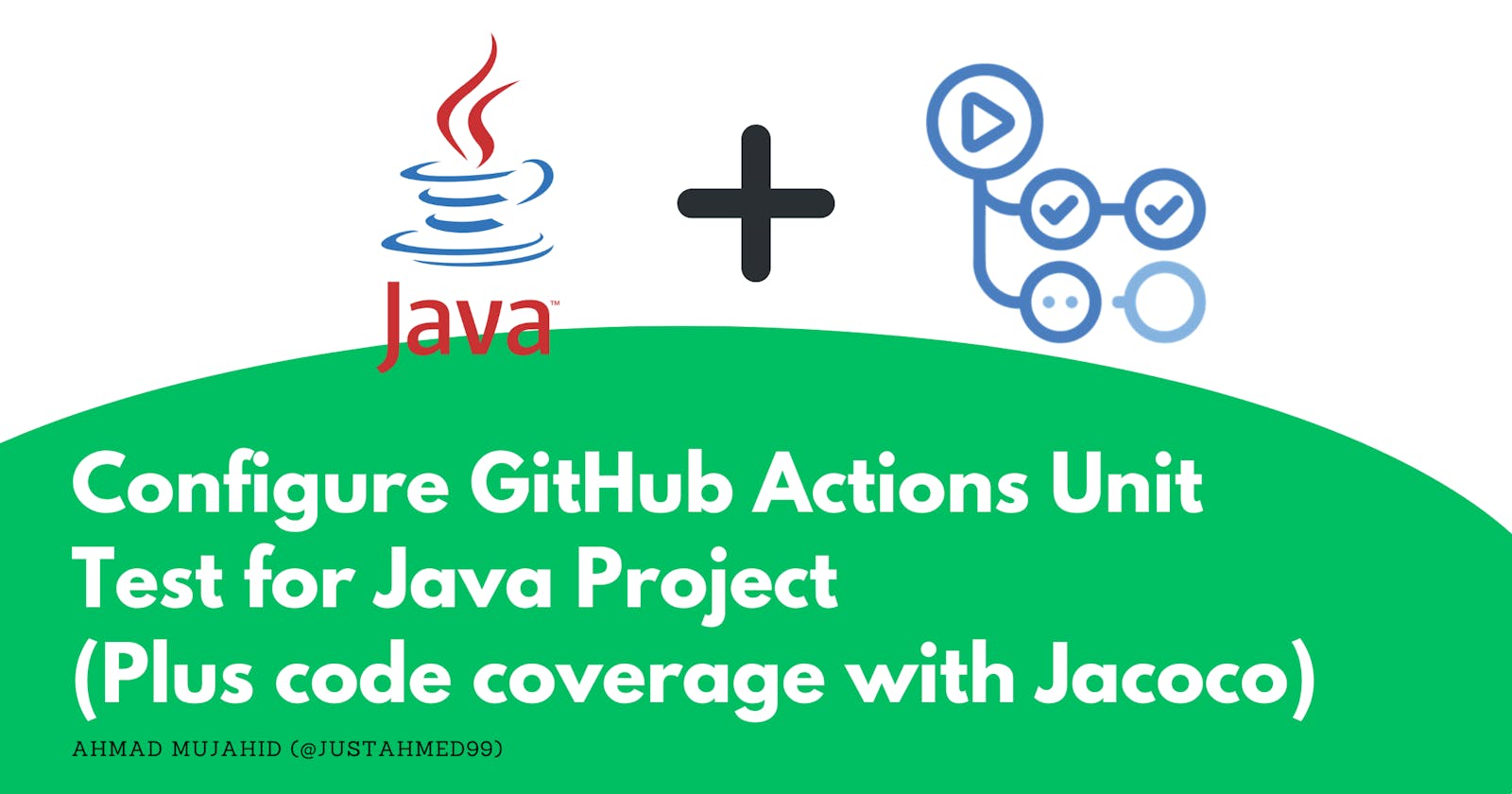Configure GitHub Actions Unit Test for Java Project (Plus code coverage with Jacoco)
Generate your unit test with GitHub Actions
In this short article, we will talk about how to set up GitHub Actions for Java projects (such as Spring Boot projects). We also integrate Jacoco to produce code coverage information.
Configure Jacoco
We must set up Jacoco in our build.gradle file. The script is like this :
plugins {
/* Other plugins */
id 'jacoco'
}
/* Other configurations and dependencies */
test {
testLogging {
events "passed", "failed", "skipped"
}
finalizedBy jacocoTestReport
}
jacoco {
toolVersion = "0.8.9"
}
jacocoTestReport {
dependsOn test // tests are required to run before generating the report
reports {
xml.required = false
csv.required = true
html.outputLocation = layout.buildDirectory.dir('jacocoHtml')
}
}
Here are some explanations :
plugins {
/* Other plugins */
id 'jacoco'
}
We must include Jacoco in plugins to use for the code coverage generator for the Java project.
test {
testLogging {
events "passed", "failed", "skipped"
}
finalizedBy jacocoTestReport
}
The testLogging part is optional. It's just to show you which test codes are passed, failed, and skipped.
jacocoTestReport {
dependsOn test // tests are required to run before generating the report
reports {
xml.required = false
csv.required = true
html.outputLocation = layout.buildDirectory.dir('jacocoHtml')
}
}
In this part, we set up which location to save the code coverage report in HTML pages. We can use this to see the code coverage information when we test the code on our local machine. For the case of GitHub Action, we only use the .csv output for code coverage. The image below is an example of Jacoco output. But, we don't use it for this case.

By default, jacoco will save the .csv output in build/reports/jacoco/test/jacocoTestReport.csv. We will use this to configure the GitHub Action script in the next step.
Configure GitHub Action workflow code
name: Java CI
on:
pull_request:
branches:
- master
jobs:
tests:
runs-on: ubuntu-latest
steps:
- uses: actions/checkout@v3
- name: Set up JDK 17
uses: actions/setup-java@v3
with:
java-version: '17'
distribution: 'temurin'
- name: Grant execute permissions to Gradle wrapper
run: chmod +x gradlew
- name: Validate Gradle wrapper
uses: gradle/wrapper-validation-action@ccb4328a959376b642e027874838f60f8e596de3
- name: Run test
run: ./gradlew test
- name: Generate JaCoCo Badge
uses: cicirello/jacoco-badge-generator@v2
with:
jacoco-csv-file: build/reports/jacoco/test/jacocoTestReport.csv
Here are some explanations :
name: Java CI
For this case, we name the GitHub Actions with Java CI. You can name it whatever you want.
on:
pull_request:
branches:
- master
The on:pull_request specifies when the workflow should be triggered. In this case, we want the script to be triggered on each pull request. In this example, we set it for master branch. This means every time developers make a pull request to master branch, this workflow will be triggered.
jobs:
tests:
runs-on: ubuntu-latest
The jobs section defines the jobs that will run as part of the workflow. In this case, we named the job as tests.
runs-on: ubuntu-latest specifies the operating system environment in which the job will run. We use Ubuntu's latest version for this example.
steps:
- uses: actions/checkout@v3
- name: Set up JDK 17
uses: actions/setup-java@v3
with:
java-version: '17'
distribution: 'temurin'
- name: Grant execute permissions to Gradle wrapper
run: chmod +x gradlew
- name: Validate Gradle wrapper
uses: gradle/wrapper-validation-action@ccb4328a959376b642e027874838f60f8e596de3
- name: Run test
run: ./gradlew test
- name: Generate JaCoCo Badge
uses: cicirello/jacoco-badge-generator@v2
with:
jacoco-csv-file: build/reports/jacoco/test/jacocoTestReport.csv
The steps section contains a list of steps that will be executed as part of the job.
uses: actions/checkout@v3: This step checks out the repository's code, allowing subsequent steps to access and interact with the project files.name: Set up JDK 17: This step sets up JDK 17 on the runner environment. The actionactions/setup-javais used to do this.run: chmod +x gradlew: This step grants execute permissions to the Gradle wrapper script, allowing it to be executed in the next step.name: Validate Gradle wrapper: This step uses thegradle/wrapper-validation-actionto validate the Gradle wrapper.run: ./gradlew test: This step runs thetesttask of Gradle using the Gradle wrapper. Thetesttask is responsible for executing the tests of the Java project.name: Generate JaCoCo Badge: This step uses thecicirello/jacoco-badge-generatoraction to generate a code coverage badge. The badge is based on the JaCoCo test coverage data stored in thejacocoTestReport.csvfile, which is typically generated by the Gradle build during the test execution.
Let's give a test
The Workflow
To test whether your workflow is working or not, you must create a pull request to your GitHub repository. You can follow this GitHub documentation on how to create a pull request (PR).
If all tests are passed, you will get this notification on your PR :

Otherwise, you will get a failed notification. You can use this information to consider whether you will accept the PR or not.
You can click Show all checks to see the details. If you enter the details, you will see some information about the workflow that just ran.

Inside the Run test part, you can see the detail about the test execution.

Code Coverage
To get the code coverage information, Open your Github repository > Actions. Then, you will get the list of all previously executed workflows, like this, the list is timely ordered :

If you choose one of them, you will get this :

In the test summary part, you can see your code coverage.
Conclusion
Automated unit testing is an important part of CI (Continuous Integration) in the software development life cycle. By utilizing GitHub Actions to handle unit tests, we automate one aspect of CI in our software development.

